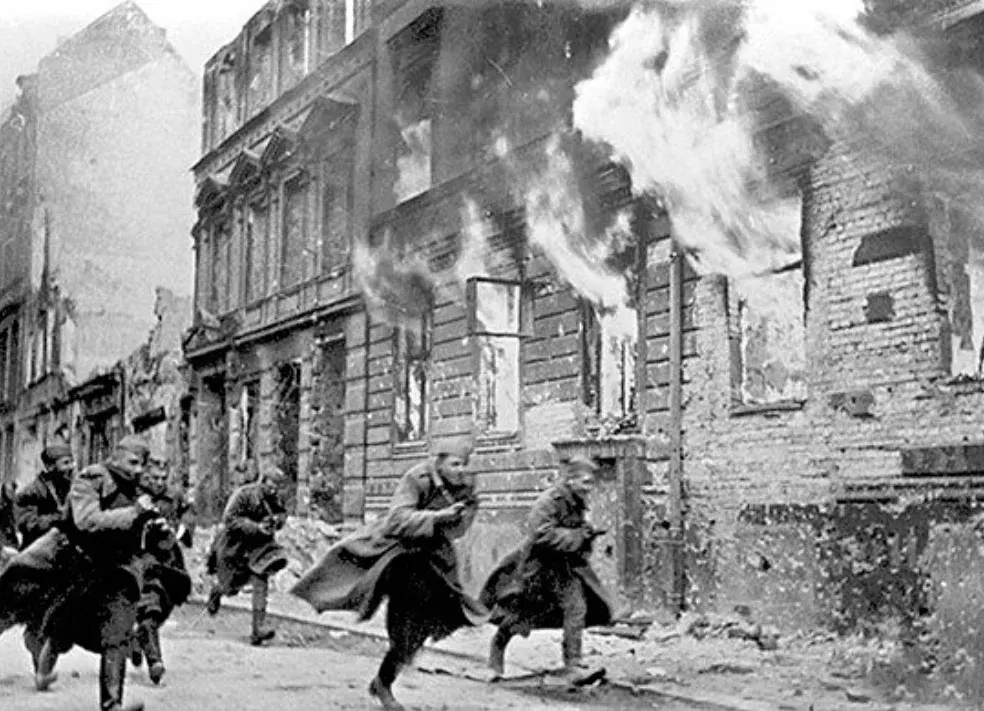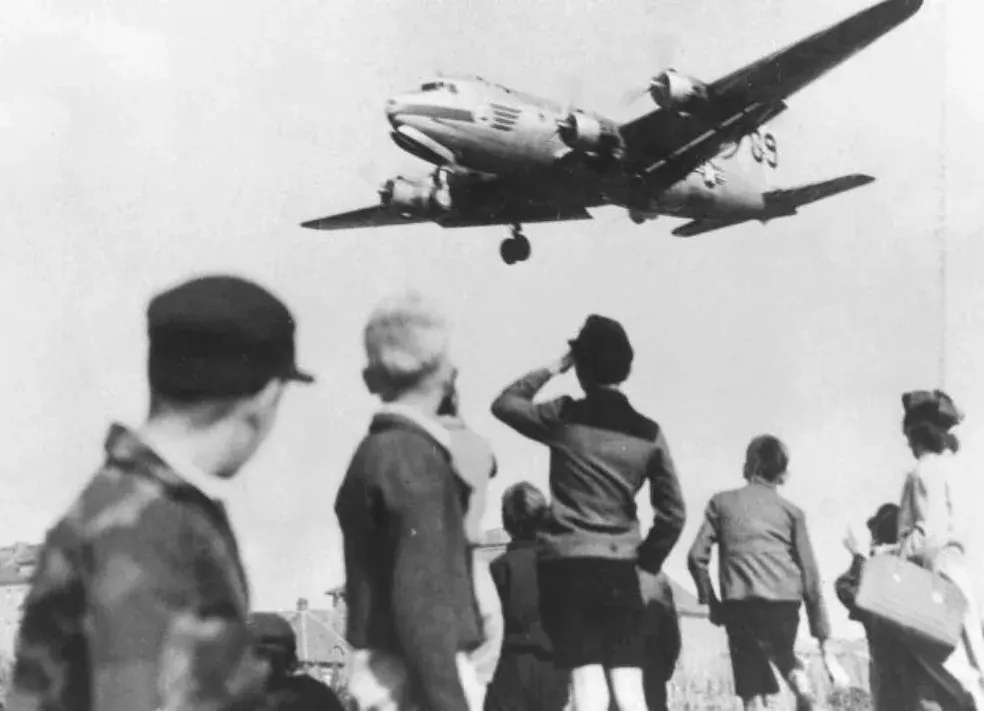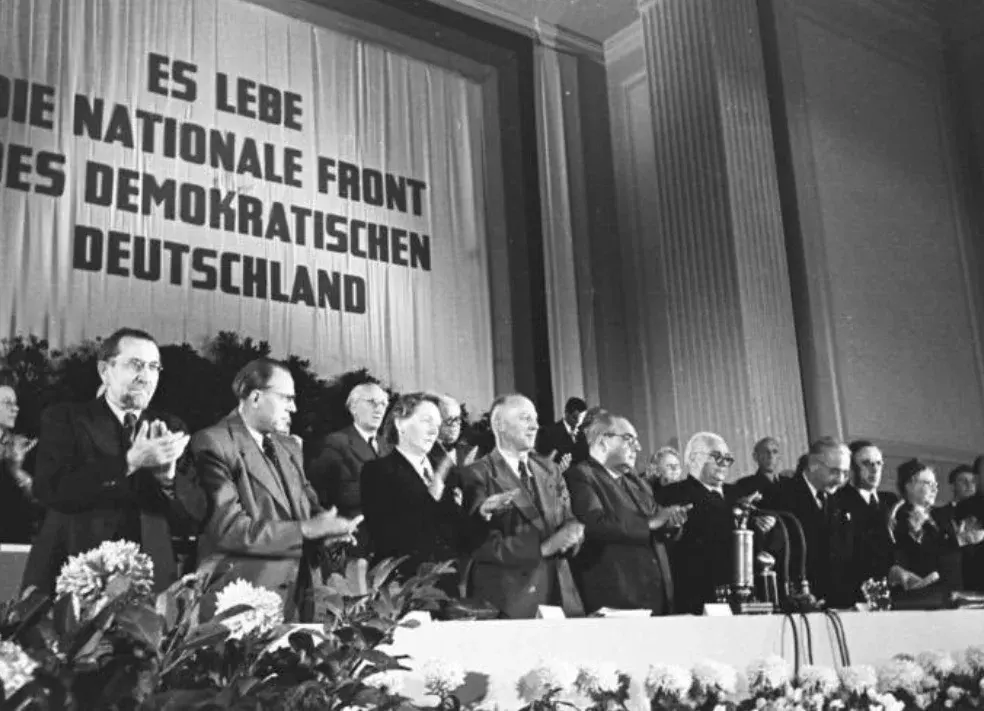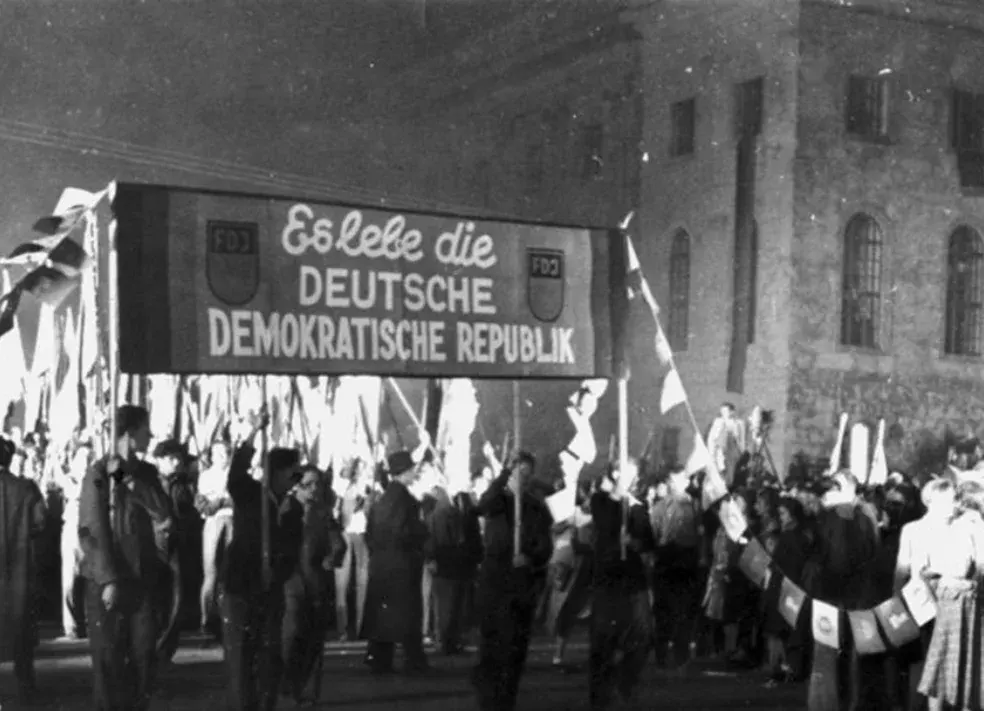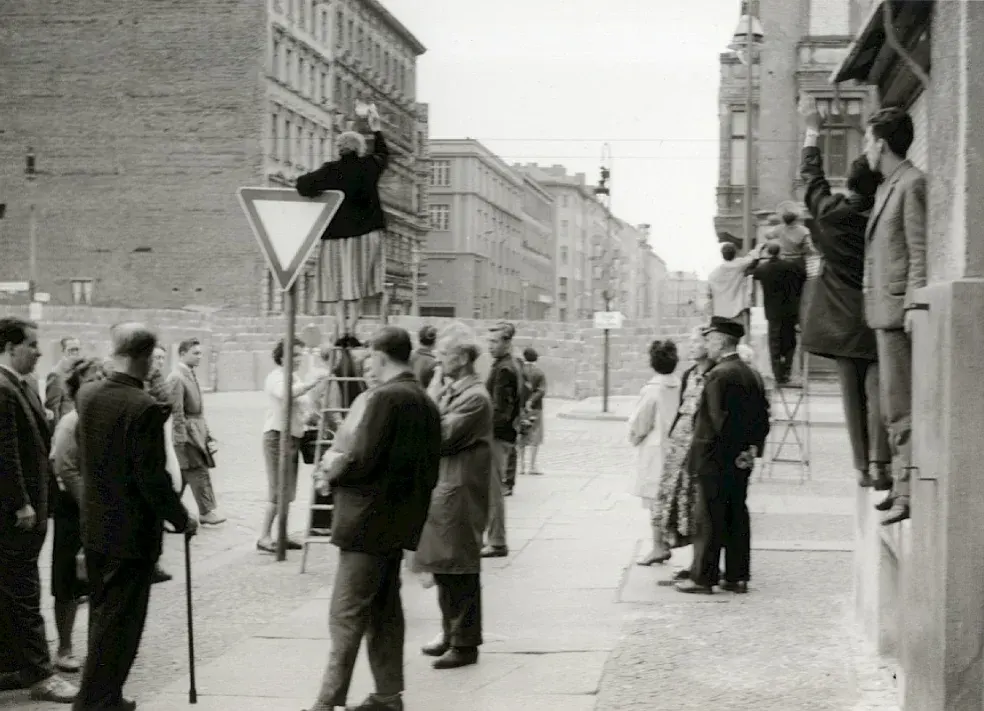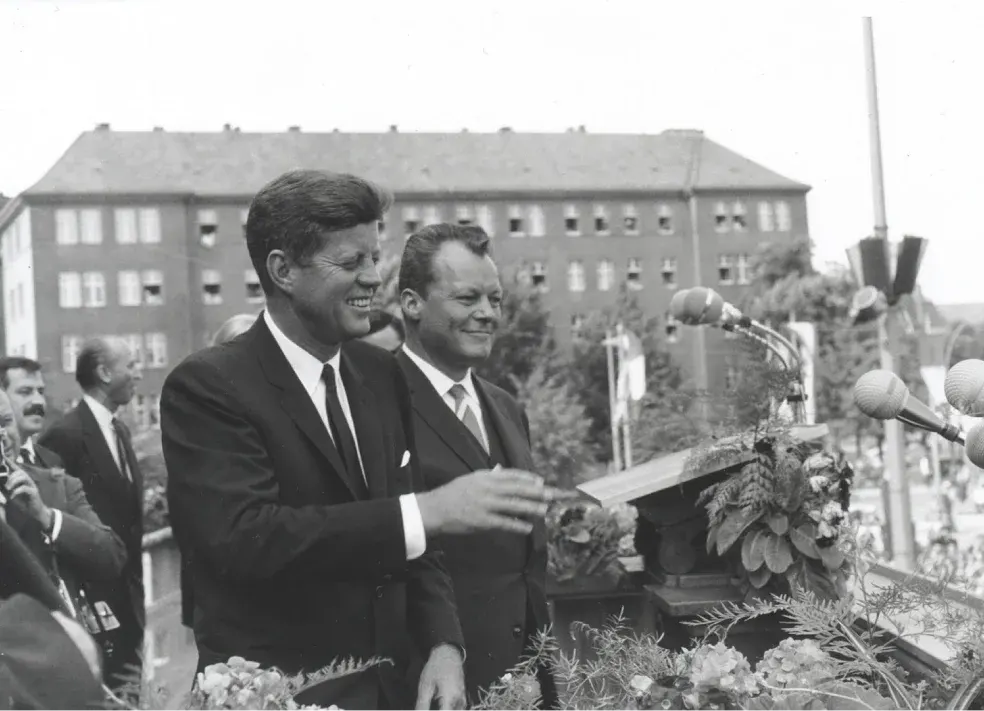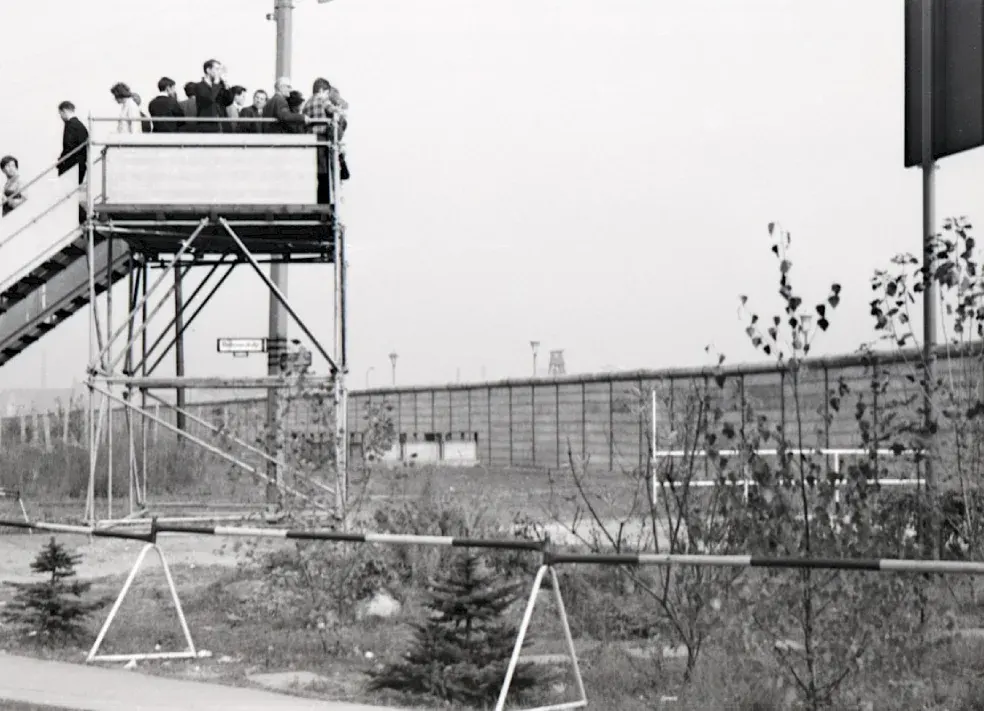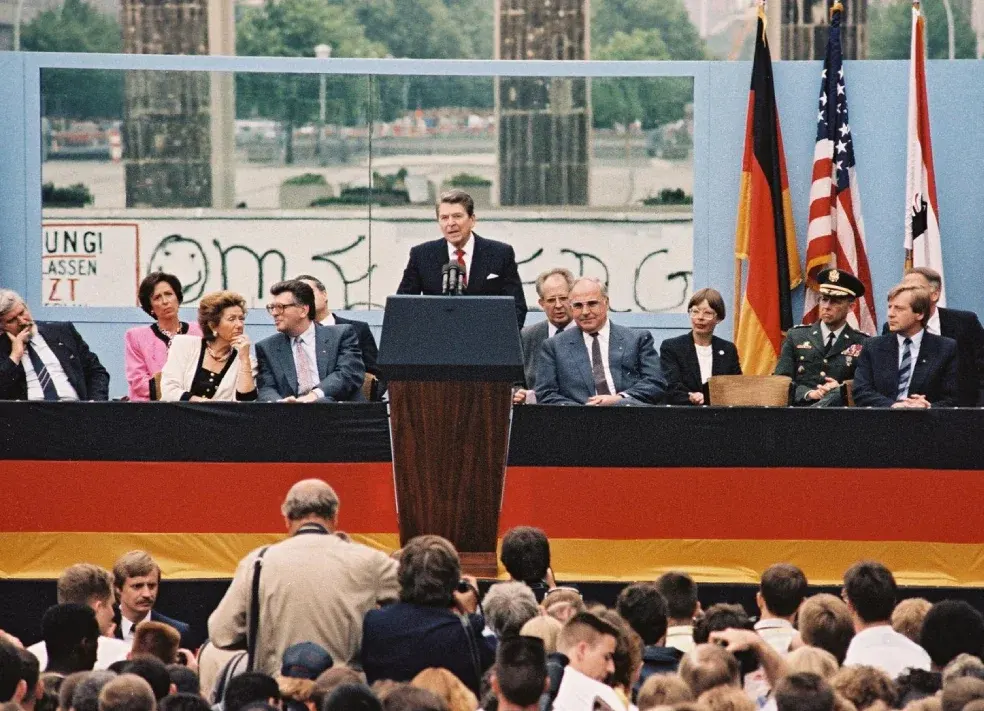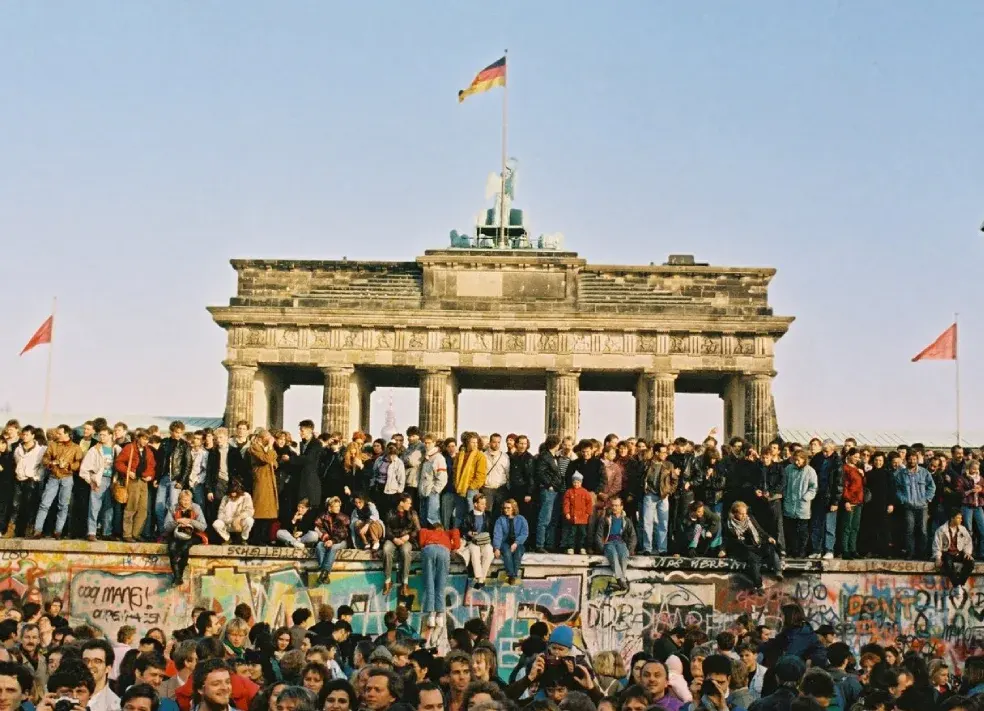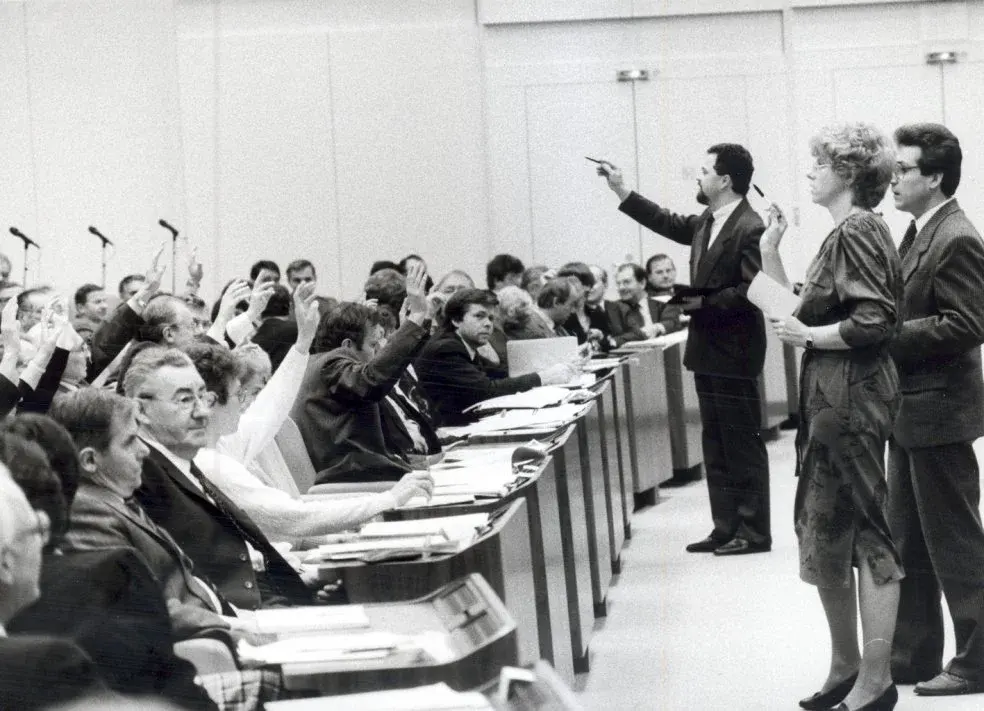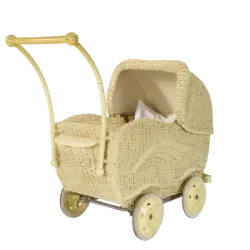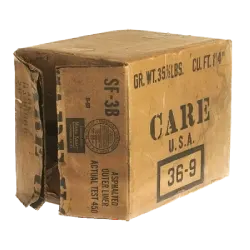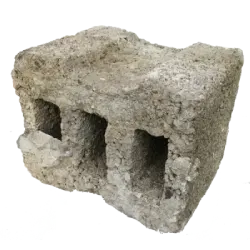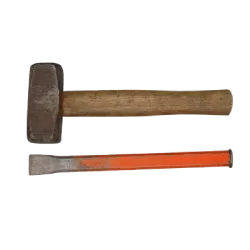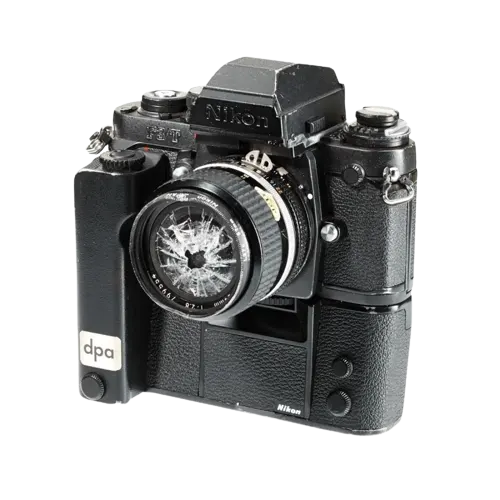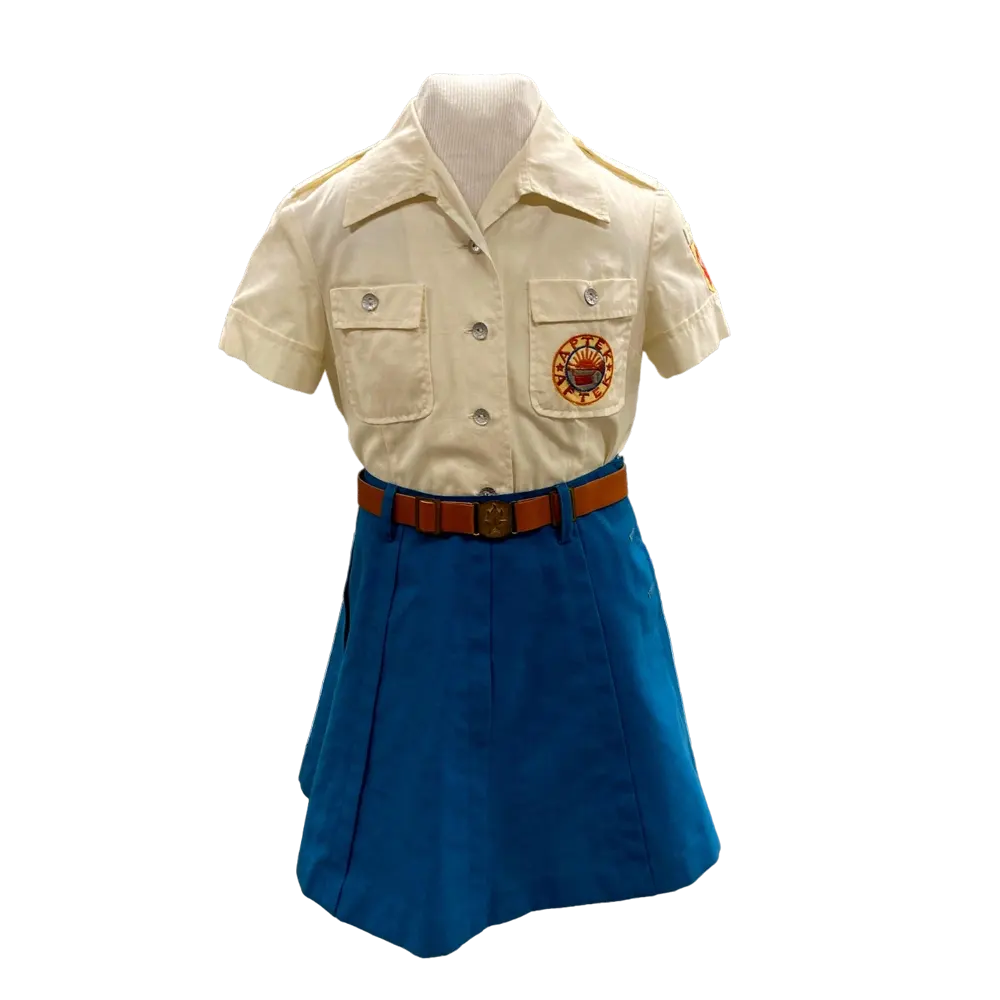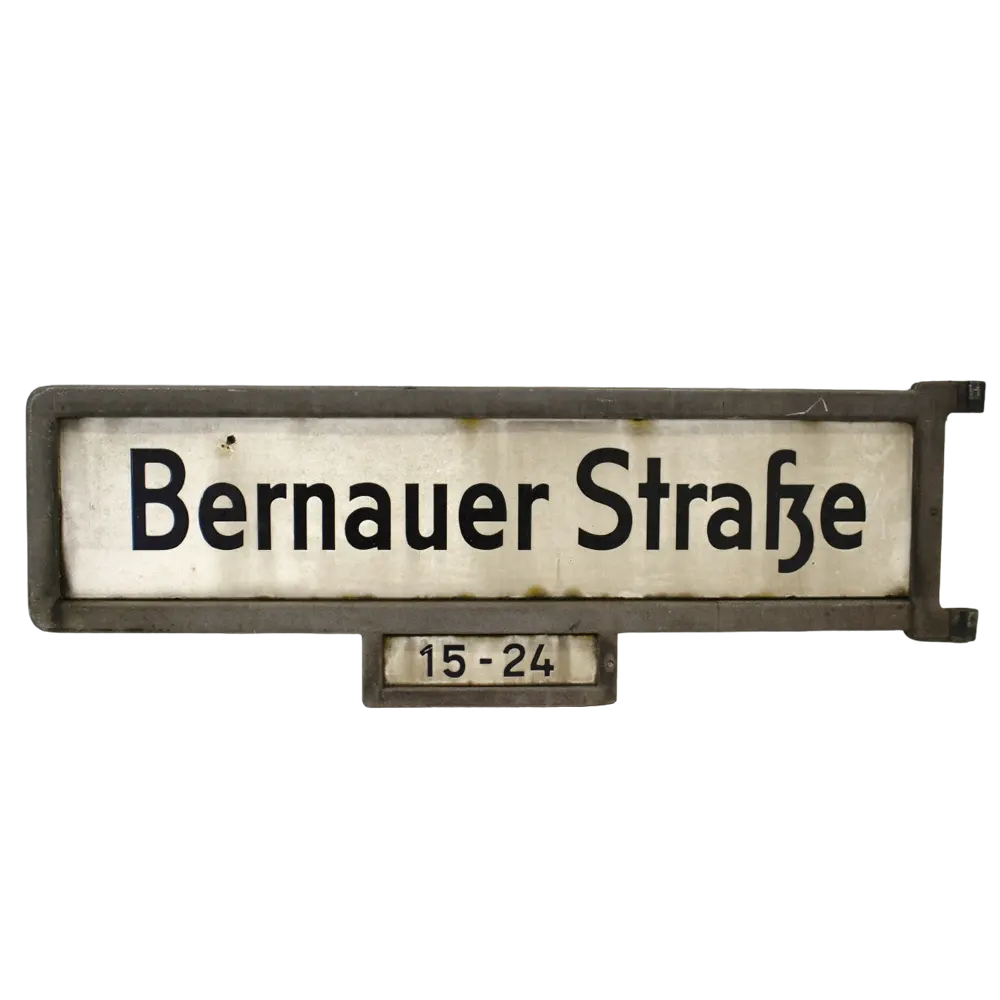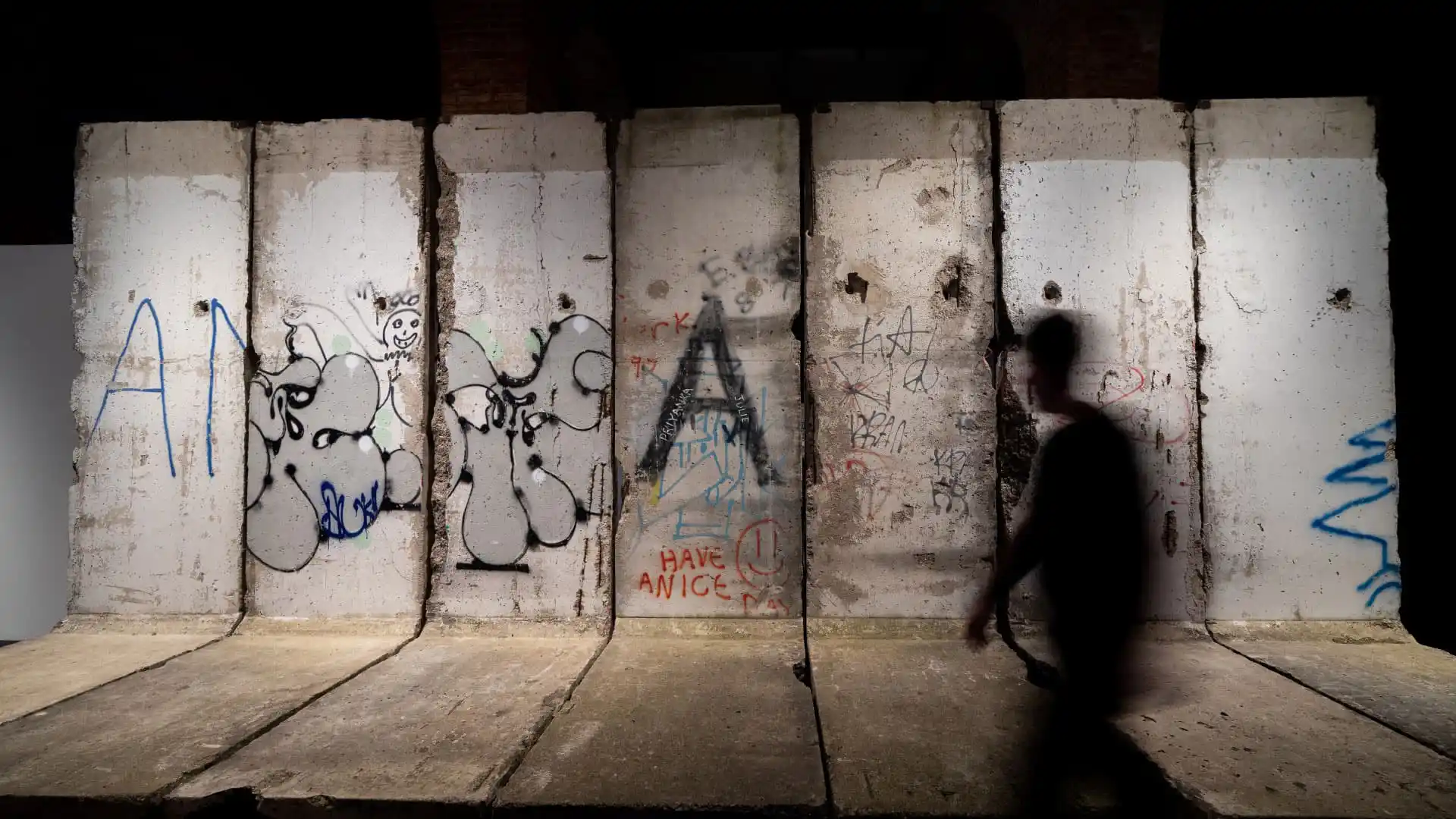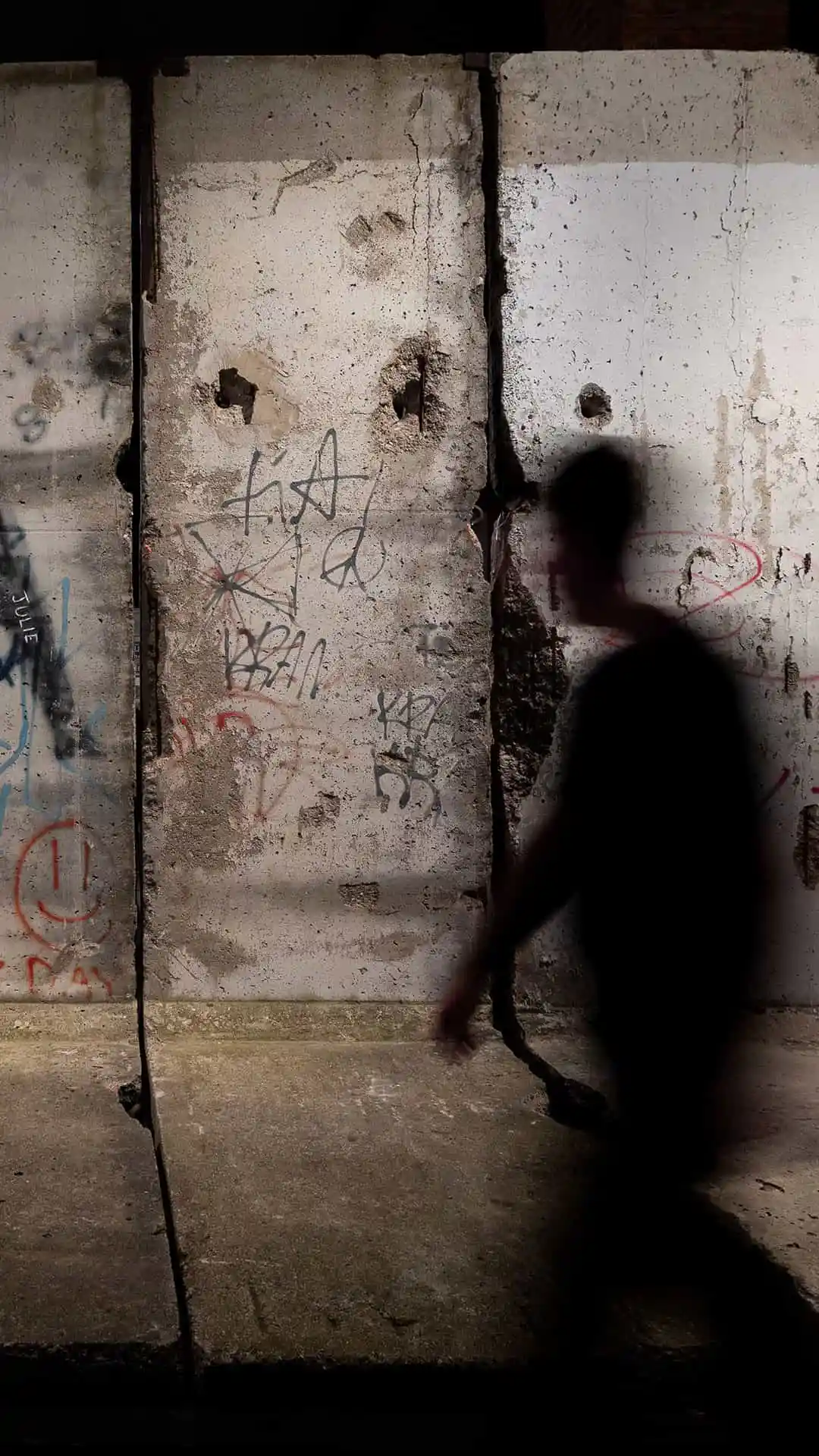Monday to Sunday
10 a.m.- 10 p.m.
Tuesday closed
THE
STORY
Introduction
“The Berlin Wall. A World Divided” explores the unfolding of this global conflict between capitalism and communism, shedding light on how it truly affected the lives of people on both sides of the Wall, with the help of over 300 original artifacts.
An extensive collection, including over 20 meters of the original wall, personal items with their own stories, and even espionage instruments, is presented alongside a thoughtfully crafted narrative and individual audio guides. This combination allows for a deep exploration of this intricate history and provides insight into the experience of living in a divided city.
Despite the fall of the Wall on November 9, 1989, the ongoing coexistence of different perspectives on how modern societies should be organized remains a daily challenge.

